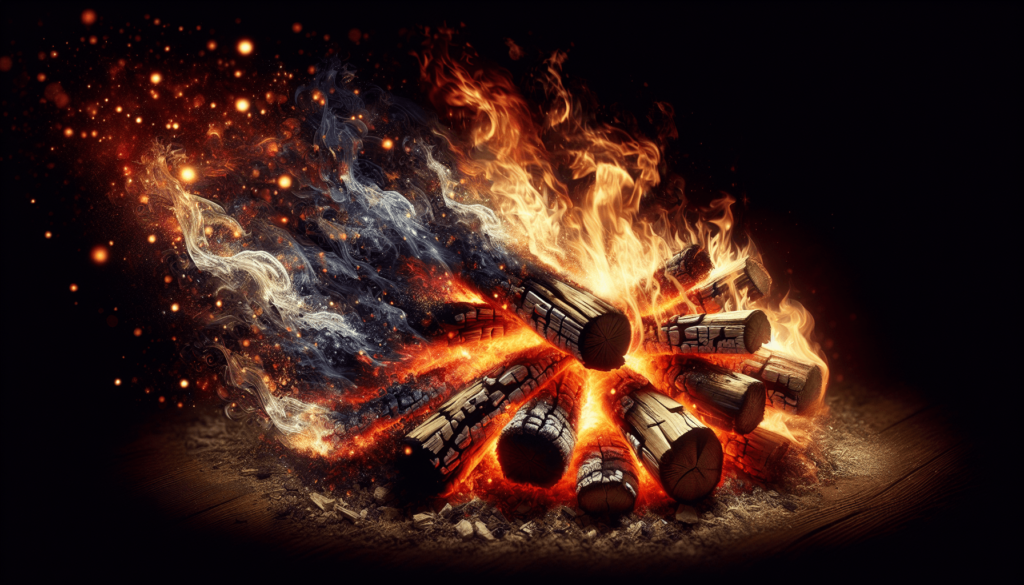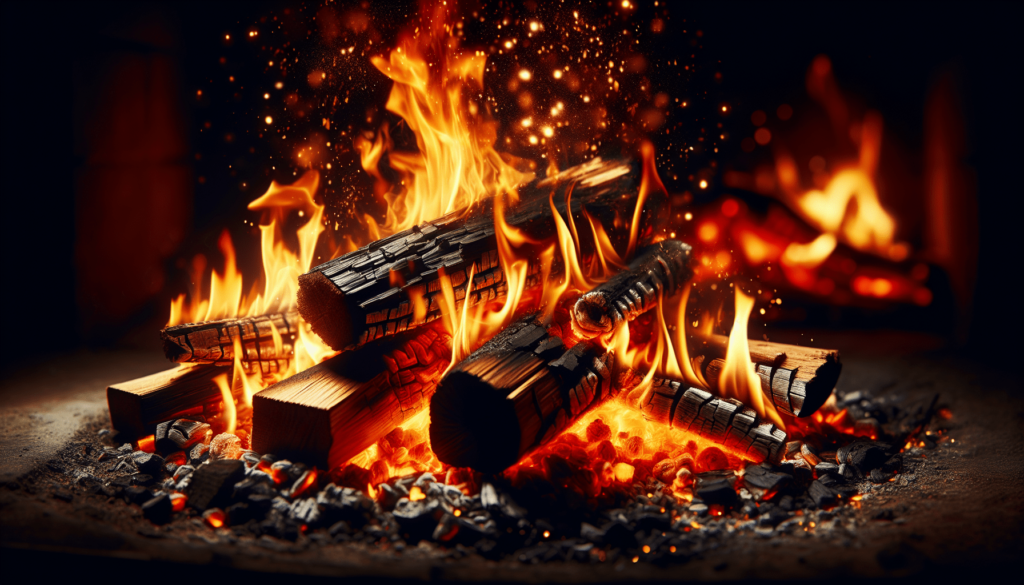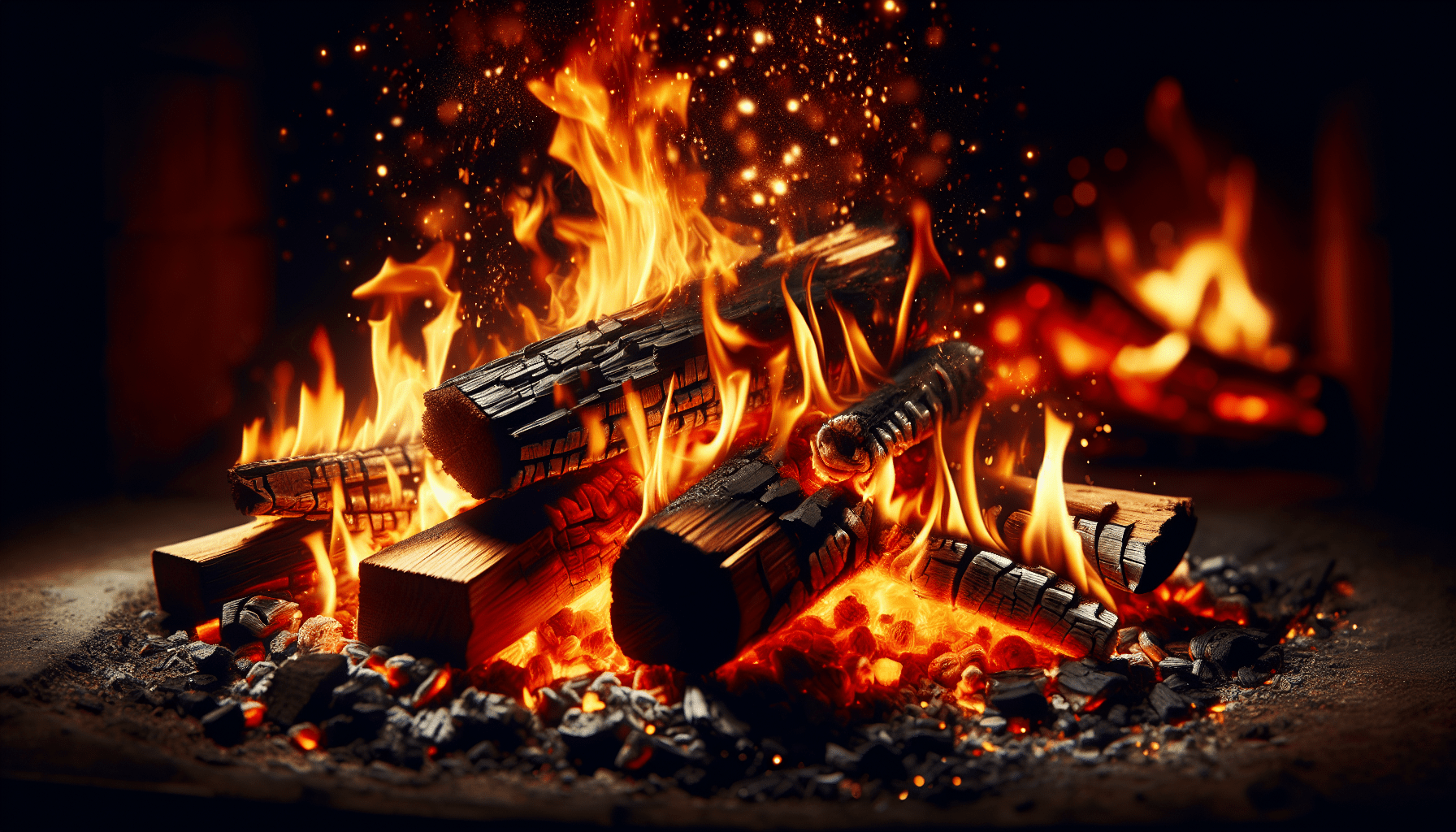When you burn wood, it’s called combustion. Combustion is a chemical process where the wood’s organic compounds react with oxygen in the air, producing heat, light, carbon dioxide, and water vapor. As I stood by the campfire, watching the flames dance and flicker, I realized it’s more than just a cozy glow; it’s a fascinating transformation of matter. From the initial spark to the crackling blaze, the science behind burning wood is both captivating and complex. What Is Called When You Burn Wood?
Have you ever found yourself mesmerized by the flames dancing in your fireplace or a campfire, wondering, “What exactly is happening when we burn wood?” I mean, it’s not just the pretty colors and warmth, right? There’s science in there, tucked between the crackles and the hiss. And no, I’m not talking about the marshmallow science a s’mores enthusiast might rave about, even though that’s highly important too.

The Science of Burning Wood
A Bit of Chemistry, Shall We?
Burning wood, in fancy scientific terms, is called combustion. But why give away all the secrets up front? Let’s break it down a bit more. When I toss a log onto the fire, it doesn’t instantly erupt into flames. No, it takes its sweet time.
Pyrolysis: The Precursor
Before you even see the flames, something called pyrolysis is happening. Pyrolysis isn’t just a word you whisper when trying to sound smart; it’s the process where heat breaks down the wood into simpler substances before combustion even starts. Imagine the wood getting all worked up, breaking into a sweat, and releasing gases like methane, carbon monoxide, and some other fanciness that mix with the air.
Ignition: The Main Event
So, now that our wood is prepped and ready like a Hollywood actor just before the red carpet, along comes heat to ignite the gases released during pyrolysis. That initial burst you see? It’s the gases catching fire. Those tiny flames dancing around are like the opening act of a concert.
Combustion: The Full Blown Concert
This is what we came for, right? The combustion process kicks in, and it’s a two-parter: flaming combustion and glowing combustion. In simpler terms, the wood gases burn with flames first, and then the leftover charcoal embers give that long-lasting cozy feel.
| Stage | Process |
|---|---|
| Pyrolysis | Wood breaks down into simpler substances before ignition. |
| Ignition | Gases released during pyrolysis catch fire. |
| Flaming | The initial combustion stage where gases burn with flames. |
| Glowing | Secondary combustion where charcoal embers glow, providing heat. |
The Products of Burning Wood
Smoke and Mirrors… Well, Mostly Smoke
Ever noticed how a smoky fire can ruin the moment? Smoke is essentially a collection of tiny particles, water vapor, and gases like carbon dioxide and carbon monoxide. Some of it smells nice—think cedar or pine—but too much of it can make your eyes water and lungs unhappy.
Ashes: What’s Left Behind
After all the excitement, what remains is ash. Wood ash contains minerals like calcium, potassium, and magnesium. My grandma used to swear by wood ash as a cleaning agent and even as a makeshift garden fertilizer. If recycling is your thing, who knew you could be eco-friendly with a sprinkle of gray dust?
Heat: The Cozy Outcome
The real hero here is the heat. It’s what we crave from a fireplace in winter or a campfire on a chilly evening. It’s the energy release during combustion that gives us this delightful warmth.
The Types of Wood and Their Burning Behavior
Hardwoods vs. Softwoods
You might have heard people toss around terms like hardwood and softwood without a second thought. In wood-burning parlance, these terms aren’t just for bragging rights—different woods burn differently.
Hardwoods
Think oak, maple, or hickory. These are the slow-burners. They’re dense, and they give off a steady heat which is ideal for long winter nights. Hardwoods tend to have less sap, reducing the risk of alarming pops and cracks.
Softwoods
Pine, spruce, and fir are the headliners here. These burn quickly and brightly, but don’t last as long as their hardwood cousins. They’ve got more sap, and if you’re not careful, you might end up with a fire that’s as dramatic as a soap opera fight scene.
| Type of Wood | Examples | Burning Characteristics |
|---|---|---|
| Hardwoods | Oak, Maple, Hickory | Slow-burning, steady heat, less sap. |
| Softwoods | Pine, Spruce, Fir | Fast-burning, bright flames, more sap. |
The Environmental Impact of Burning Wood
The Carbon Cycle
Burning wood is part of the natural carbon cycle. When a tree grows, it absorbs carbon dioxide. When it burns, it releases that carbon dioxide back into the atmosphere. In an ideal world, where trees are replanted as they’re cut down, it’s a balanced cycle.
Pollution Concerns
However, let’s not ignore the pollution angle. Burning wood releases particulate matter, carbon monoxide, volatile organic compounds (VOCs), and other pollutants. Poorly managed fires can contribute to air quality problems, and in enclosed spaces, even health risks.
Sustainable Wood Burning
So, here’s where we can be heroes. Using seasoned or kiln-dried wood reduces smoke and pollution. Modern wood stoves and fireplaces are designed to burn wood more efficiently, reducing harmful emissions. And, of course, supporting sustainable forestry practices helps ensure we have trees to burn and absorb CO2 in the future.

Tips for Efficient Wood Burning
Seasoning Your Wood
When I learned wood needs to “season,” I thought we scattered it with salt and pepper. Turns out, seasoning wood means letting it dry out for at least six months after cutting. This reduces the moisture content, making it burn cleaner and hotter.
Proper Storage
I might have left wood logs outside, thinking they’re tough enough to handle the elements. Big mistake. Wood needs to be stored off the ground and covered but with enough air circulation to keep it dry.
Building the Right Fire
There’s an art to this, like making a sandwich. You can either go with the traditional teepee method, stacking logs in a pyramid shape with kindling in the center, or opt for the log cabin style, which involves crisscrossing pieces. Both methods ensure good airflow, which is key to a clean, efficient burn.
Fun Facts About Burning Wood
The Oldest Fire Known
The oldest evidence of controlled fire use by humans dates back nearly 1 million years. Archaeologists found charred remains in South Africa’s Wonderwerk Cave. Can you imagine what their campfire stories were like?
The Hottest Wood
Not all wood burns at the same temperature. Osage Orange, a hardwood, burns at amazingly high temperatures. Good for those bone-chilling nights, but maybe overkill for a summer evening marshmallow toast.
Mystery of Blue Flames
Ever noticed blue flames at the base of a fire? That’s an indicator of very efficient combustion, where there’s enough heat and oxygen for complete burning of the wood gases.
Common Myths About Burning Wood
Green Wood Burns Hotter
This one’s as mythological as unicorns. Fresh-cut, or green wood, contains a lot of moisture. It’s tough to ignite and burns poorly, releasing more smoke and risking creosote buildup in chimneys.
More Smoke Means More Heat
Nope. More smoke means incomplete combustion. A well-burning fire produces minimal smoke, as most of the gases are combusting cleanly.
All Wood Burns the Same
As if! Different species and even individual trees within a species can burn differently. Factors like moisture content, density, and resin content all play roles in how your fire behaves.
Safety Tips for Wood Burning
Regular Maintenance
Your chimney is not a magical self-cleaning entity. Regularly sweeping it and checking for creosote buildup can prevent dangerous chimney fires.
Air Quality Monitors
Especially in enclosed spaces, an air quality monitor can be crucial. Burning wood releases substances we don’t want to breathe in large amounts. These devices can alert you when the air quality drops, allowing you to adjust ventilation or stoke the fire to burn cleaner.
Fire Extinguishers
Ever seen those “epic fail” videos of people trying to put out fire with water, causing more chaos? Keep a fire extinguisher nearby, designed for wood fires. Makes you look like a pro while potentially saving your home.
The Allure of Burning Wood
Aesthetic Pleasure
I mean, who doesn’t love the look of a roaring fire? There’s something inherently captivating about the play of flames, the richness of the colors, and the crackling sounds. It’s nature’s TV show. Put on some jazz or classical music, throw a log on, and you’ve got the perfect evening set-up.
Psychological Benefits
Believe it or not, studies have shown that watching a fire can lower blood pressure and reduce stress. It’s like a warm blanket for your soul. Maybe that’s why so many of us find solace in staring into the flames, contemplating life or simply getting lost in the dance of the fire.
Community Aspect
Think about it: how many social gatherings take place around a fire? From campfires to holiday fireplaces, these settings encourage storytelling, laughter, and connection. The fire becomes the heart of the gathering, a focal point that draws people in.
Innovations in Wood Burning
Modern Stoves and Fireplaces
While there’s a nostalgic charm to the old-fashioned open hearth, modern wood stoves and fireplaces are engineered for efficiency. They maximize heat output while minimizing pollutants, thanks to improved airflow designs and updated materials.
Pellet Stoves
Pellet stoves offer an innovative twist on traditional wood burning. They use compressed wood or biomass pellets. Not only are these stoves efficient, but they also produce minimal ash and require less frequent refueling than traditional wood stoves. It’s like wood burning on easy mode.
Eco-Friendly Logs
Ever heard of eco-logs or bio-bricks? These are made from compressed sawdust, recycled cardboard, and other organic materials. They offer a cleaner burn and are a great option if you’re looking to reduce your carbon footprint without sacrificing the joy of a real fire.
Conclusion
When I fire up my wood-burning stove, I’m not just generating heat; I’m participating in a centuries-old ritual steeped in chemistry, history, and tradition. From understanding the complex processes of pyrolysis and combustion to recognizing the benefits and challenges of different woods, I gain a deeper appreciation for what might have seemed like a simple act.
So, next time you’re sitting in front of a fire, basking in its warmth—or maybe even poking at it with a stick—remember, there’s a fascinating blend of art and science at work. Whether you’re enjoying the company of friends, savoring a moment of solitude, or simply getting lost in the hypnotic flames, burning wood is an experience rich with meaning and complexity. And let’s face it, knowing a bit about the chemistry and history behind it just makes the whole experience a bit more satisfying, doesn’t it?

